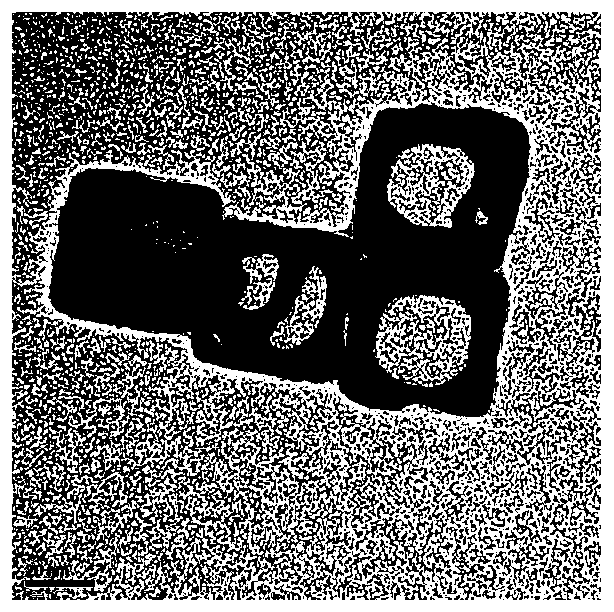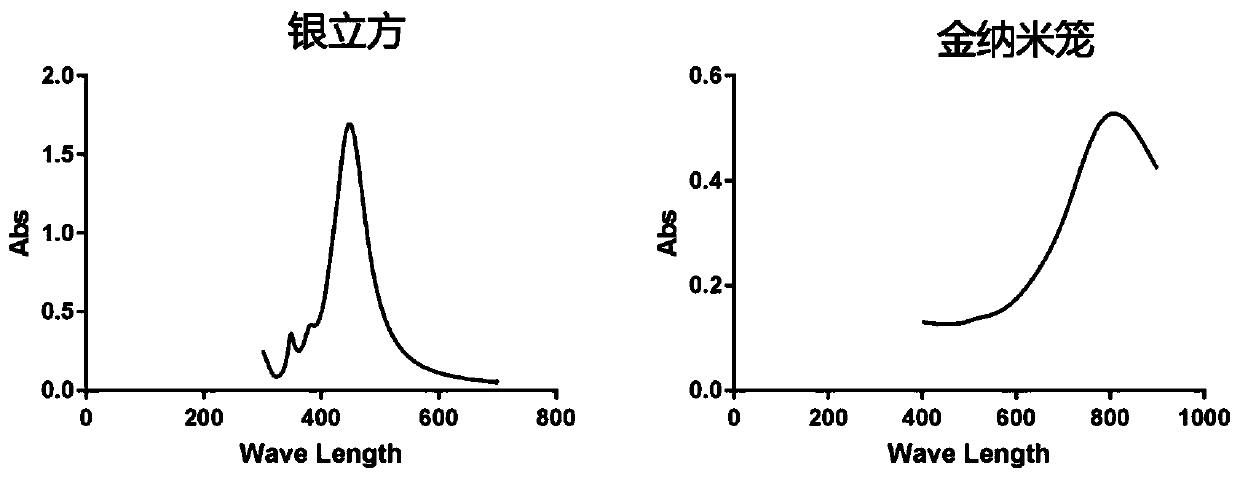Application of gold nanocages in DAN injury resistance
A DNA damage and gold nanocage technology is applied in the field of biomedical material technology and biomedicine, which can solve the problems of high side effects, inability to quickly and efficiently remove free radicals, lack of specificity, etc., and achieve increased cell activity and good Effects on Biosecurity, Facilitating Quantity and Function
- Summary
- Abstract
- Description
- Claims
- Application Information
AI Technical Summary
Problems solved by technology
Method used
Image
Examples
Embodiment 1
[0037] The preparation method of embodiment 1 gold nanocage
[0038] The present invention proves the application of gold nanocages in resisting DNA damage and death. The gold nanocages are cubic nanocage structures with hollow inside and porous side walls. The average diameter of the particles is between 50-120nm, preferably 70- 100nm, the particle size is uniform, and its shape under the transmission electron microscope is as follows figure 1 ; In the near-infrared region (wavelength 700-900nm), there is a characteristic peak absorption, preferably 780-810nm, and its ultraviolet absorption peak is as figure 2 .
[0039] Gold nanocages are synthesized by electrochemical substitution method, including the following steps:
[0040] 1) Heat 50mL of ethylene glycol to 150 degrees under magnetic stirring, then add 0.6mL of 3.0mM Na 2 S. After 2 minutes, PVP solution in ethylene glycol (20 mg / mL, 12.5 mL) and hydrochloric acid solution (3.0 mM, 5 mL) were added rapidly. After...
Embodiment 2
[0047] Example 2 Gold nanocages promote the proliferative activity of cells
[0048] DNA damage can be caused by DNA metabolism, chemical drug (reagent) mutagenesis, ionizing radiation and reactive oxygen damage. DNA damage directly affects DNA replication, transcription and protein synthesis, and then affects life activities such as cell growth, development, inheritance, metabolism and reproduction. In order to study whether gold nanocage materials can protect cell growth activity under different drug stimuli , we treated RAW264.7 cells with different concentrations of hydroxyurea and low-glucose medium to induce cell damage, by adding the gold nanocage material synthesized in Example 1, and using commercially available gold nanorod material (Deco island gold, DKAU- 5.4) As a control, the CCK8 assay was used to detect the effect of different nanomaterials on the cell proliferation activity.
[0049] experimental method:
[0050] First, mononuclear cells RAW264.7 (mouse-deri...
Embodiment 3
[0052] Example 3 Gold nanocage material reduces apoptosis caused by DNA damage and its mechanism
[0053] In order to verify the rescue effect of gold nanocages on cell damage, we further used hydroxyurea to induce DNA damage state to study the effect of gold nanocages on cell apoptosis.
[0054] Experiment 1: Changes in cell apoptosis detected by flow cytometry
[0055] (1) Cell treatment: first seed RAW264.7 cells in a 6-well cell culture plate and culture them with 10% FBS at 37°C and 5% CO 2 Cultivate in the incubator for 4 hours, and then replace with the medium containing 0.5mM hydroxyurea; at the same time, add 10 μg / mL of the gold nanocage material synthesized in Example 1 to the experimental group, and add an equal volume of double-distilled water to the control group. In order to study the effect of gold nanocages on short-term damage resistance and long-term induction repair of cells, the experimental group was divided into two groups: ① test after 12 hours of cult...
PUM
 Login to View More
Login to View More Abstract
Description
Claims
Application Information
 Login to View More
Login to View More - R&D
- Intellectual Property
- Life Sciences
- Materials
- Tech Scout
- Unparalleled Data Quality
- Higher Quality Content
- 60% Fewer Hallucinations
Browse by: Latest US Patents, China's latest patents, Technical Efficacy Thesaurus, Application Domain, Technology Topic, Popular Technical Reports.
© 2025 PatSnap. All rights reserved.Legal|Privacy policy|Modern Slavery Act Transparency Statement|Sitemap|About US| Contact US: help@patsnap.com



